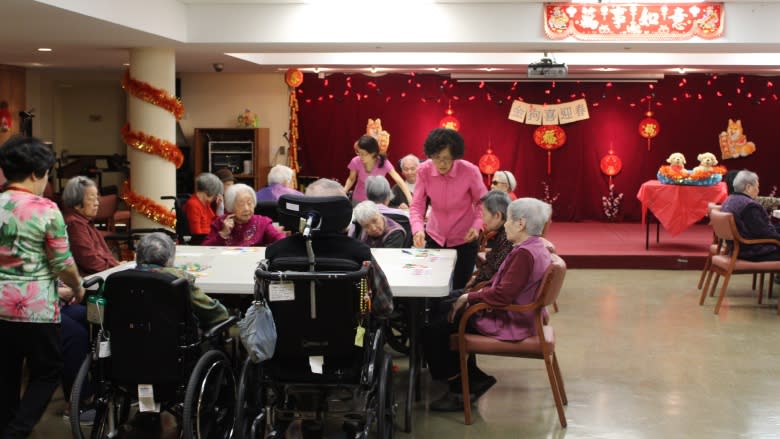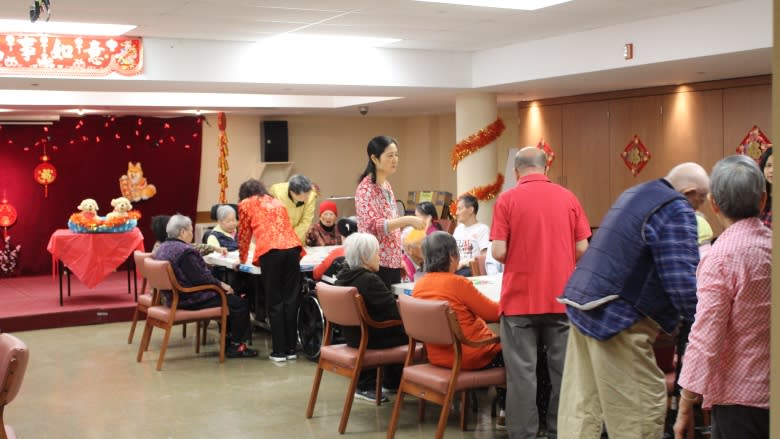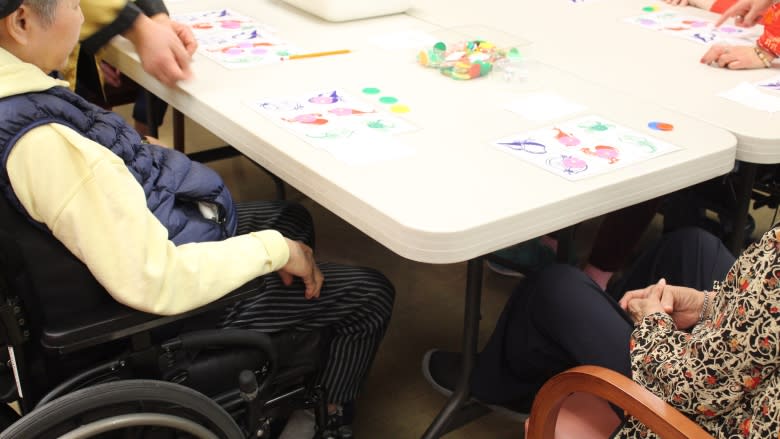Chinese-Canadian charity raising funds to increase long-term care spaces for seniors
Friday was a day of excitement for residents of the Mon Sheong Home for the Aged in downtown Toronto — with the seniors playing the traditional gambling games of their youth as part of lunar new year celebrations.
But as the Chinese population rapidly grows in the GTA, some seniors in the community are stuck in regular retirement homes where Friday was just a regular day, cutting them off from the foods, the games and other familiar traditions of a beloved holiday.
The wait time for a place at a Mon Sheong foundation long-term care centre is up to 12 years. That's because they only have 457 beds and more than 4,500 seniors waiting in line.
"The wait list gives a very clear picture of the need," says foundation CEO Stephanie Wong.
Mon Sheong, a charity that supports Canada's Chinese community, operates three long-term care centres that are different from typical nursing homes. As one of the province's culturally-specific long-term care providers, their residences are home primarily to Chinese seniors. At those three homes, wait times have increased 211 per cent over the last 10 years.
It's a situation Wong and her foundation are hoping to change with an ambitious expansion plan.
Through a recently announced fundraising project, Mon Sheong hopes to create new locations in the GTA that will provide up to 600 beds, pending approval from the provincial government. They estimate the locations will cost $150 million to build, while operational costs will be subsidized by the province.
The Chinese community isn't the only one grappling with the problem. With a growing elderly immigrant population in the GTA, seniors seeking spots in culturally-specific homes wait far longer than average.
Chinese seniors are often unable to adjust to mainstream long-term care facilities, says Shirley Tam, Mon Sheong's donor relations officer.
"In our research, we found that many Chinese people, they are just staying at home with nowhere to go. If they go to other facilities, they might stay there for a while, but they want to go back to their own homes," she said.
"But at Mon Sheong, once they're admitted, they never want to go home."
Tam says that's because facilities like hers can provide residents with culturally-appropriate care, overcoming the two main barriers they face elsewhere — unfamiliar foods and an unknown language.
"Seniors [who] come from mainland China, Taiwan or Hong Kong, they might not be able to speak fluent English, but if their children put them in the mainstream long-term care centres, they have difficulties communicating with staff working in the facility. Mon Sheong is different. Most of [our] staff know English, Cantonese and Mandarin."
Social isolation
Amy Zhou, a founder of the Chinese Canadian Collective, says culturally-specific homes also combat social isolation among residents.
"With a lot of seniors in specific ethnic communities, it can be very isolating if they come here later in life … So finding those long-term care facilities or communities will help them stay healthy and help them enjoy the rest of their lives," she said.
"If they do choose to go to a long-term care facility, it's important to have those places that they can find those people who come from the same background as them, someone who shares the same language as them, someone who can understand them better, so they're less isolated."
Beyond basic care, Mon Sheong's homes provide the activities and traditional celebrations Chinese seniors are used to — including lunar New Year.
The celebrations began Friday with traditional Chinese gambling games and will continue with performances and dances.
"We can give them back a lot of their memories," Tam said.
While the move to long-term care is challenging for most seniors, the linguistic and culturally-specific services provided at homes like Mon Sheong make the transition easier, Wong says.
"Elderly people when they have to leave home and live in a long-term care centre in itself is a big challenge; it's a big hurdle that they have to overcome. So if they don't have the language capabilities or they don't have the food of their culture, it makes it a lot of more difficult to get accommodated," she said.
"The most important thing is that the residents have to feel that they are at home."




